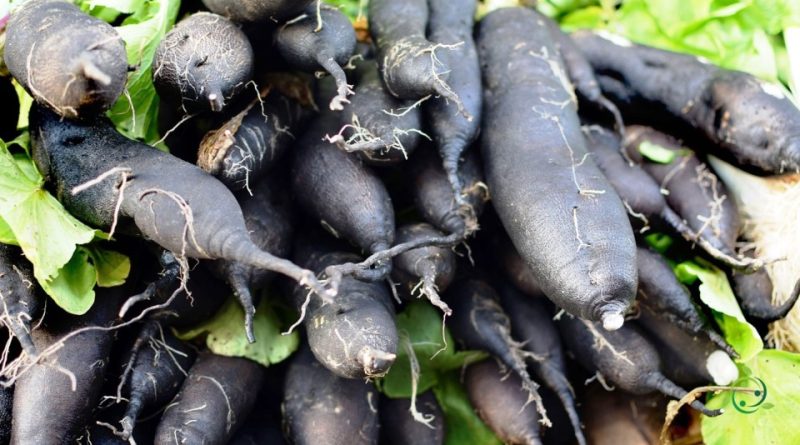Nutritional value of Salsify
Nutritional value of Salsify
The Salsify (Pseudopodospermum hispanicum (L.) Zaika, Sukhor. & N.Kilian, 2020) is a plant of the Asteraceae family grown for food use.
Characteristics –
Salsify is a herbaceous perennial plant, often grown for its edible roots, which are similar to carrots but have a stronger, earthier flavor.
The Salsify has long and narrow basal leaves, dark green in color and with an elongated shape similar to swords. The plant also produces flower stalks that bear small yellow daisy-like flowers.
The roots are the main reason Salsify is grown. They are long and thin, usually black or dark brown in color. Inside, the root pulp is white and fleshy. Salsify roots are eaten as a cooked vegetable and have a distinctive flavor, often described as a combination of asparagus and carrots.
Salsify is grown in temperate climates and grows best in well-drained, deep soil. It is a hardy plant that can tolerate cold temperatures and its main growing period is during the cold season.
Salsify roots are often peeled, boiled, or boiled until tender. They can be used in a variety of dishes, such as side dishes, soups, or even stir fries. The unique flavor of the roots makes them an attractive addition to the kitchen.
Salsify is rich in fiber, vitamins (such as vitamin C) and minerals (such as potassium). Its roots also contain beneficial plant compounds, such as antioxidants. However, as with any food, it’s important to consider balance in your overall diet.
Salsify was already cultivated and consumed in ancient times. It was appreciated for its medicinal and nutritional properties. Its name comes from the Italian word “scorza nera”, which refers to the dark color of the roots.
Nutritional card –
Salsify is a nutrient-rich food and can be a healthy choice to include in your diet. However, keep in mind that the nutritional information may vary slightly according to the cultivation system and the quality of the product. Here is a rough estimate of the raw salsify nutritional card per 100 gram serving:
– Calories: about 60 kcal
– Carbohydrates: about 14 g
– Fibers: about 4 g
– Sugars: about 3 g
– Proteins: about 2 g
– Fat: about 0.2 g
– Vitamin C: about 5 mg (8% of the daily requirement)
– Vitamin A: about 1200 IU (24% of the daily requirement)
– Vitamin E: about 1.5 mg
– Vitamin K: approximately 13.3 µg
– Folate (Vitamin B9): about 40 µg
– Potassium: about 400 mg
– Calcium: about 70 mg
– Iron: about 1.6 mg
– Magnesium: about 20 mg
Salsify is also a source of other micronutrients such as manganese, copper and zinc, albeit at lower levels than those listed above. The information provided here is only a rough estimate and can vary depending on factors such as the salsify variety and growing conditions.
Remember that cooking Salsify can slightly affect its nutritional composition. Additionally, the nutritional information may be affected by preparation and cooking.
Property –
Salsify has interesting nutritional properties and therapeutic properties.
Salsify root is rich in dietary fiber, vitamins (such as vitamin A, vitamin C and some of the B group), and minerals (such as potassium, calcium, iron and phosphorus). It also contains complex carbohydrates and proteins.
Salsify has traditionally been used for some health-promoting properties, including its diuretic effect, appetite stimulation, and digestive system support.
The presence of fiber in salsify can help reduce blood cholesterol levels.
Thanks to the presence of vitamin C and other antioxidants, Salsify can help support the immune system, protecting cells from damage caused by free radicals.
The fibers found in salsify root may act as a prebiotic, i.e. provide nutrition for the beneficial bacteria in the gut, thus contributing to better digestive health.
Salsify root is low in calories, making it an attractive choice for people trying to control weight.
Salsify root can be cooked in a variety of ways, including boiled, roasted, sautéed, or used in soups and stews.
However, it is important to note that some people may be allergic to Salsify or may experience gastrointestinal distress after consuming it. As with any food, it is advisable to introduce it into the diet gradually to observe any reactions.
Before making any significant changes to your diet or using any new foods for health benefits, it is always wise to consult a medical professional or registered dietitian, especially if you have any pre-existing health conditions or food allergies.

